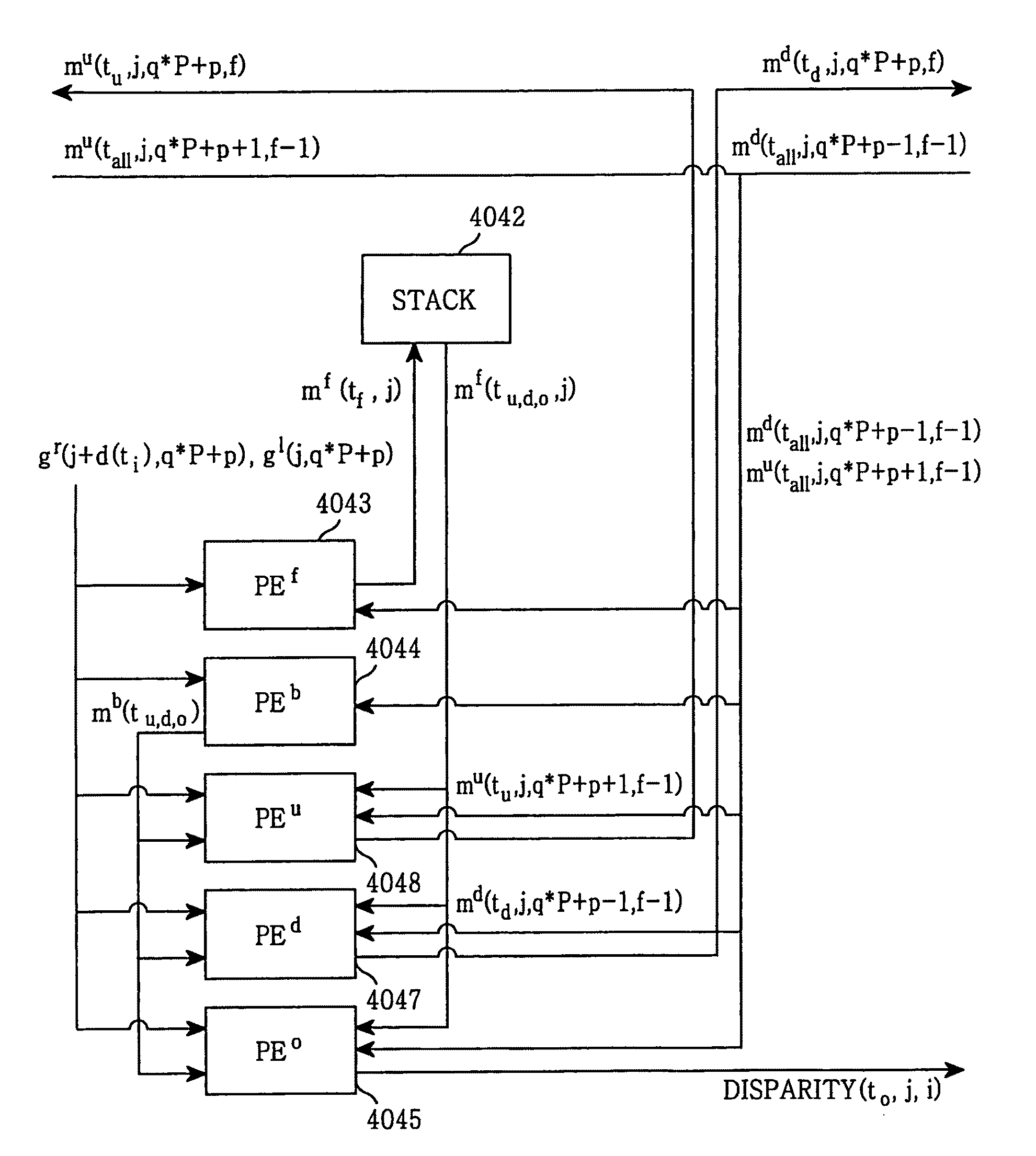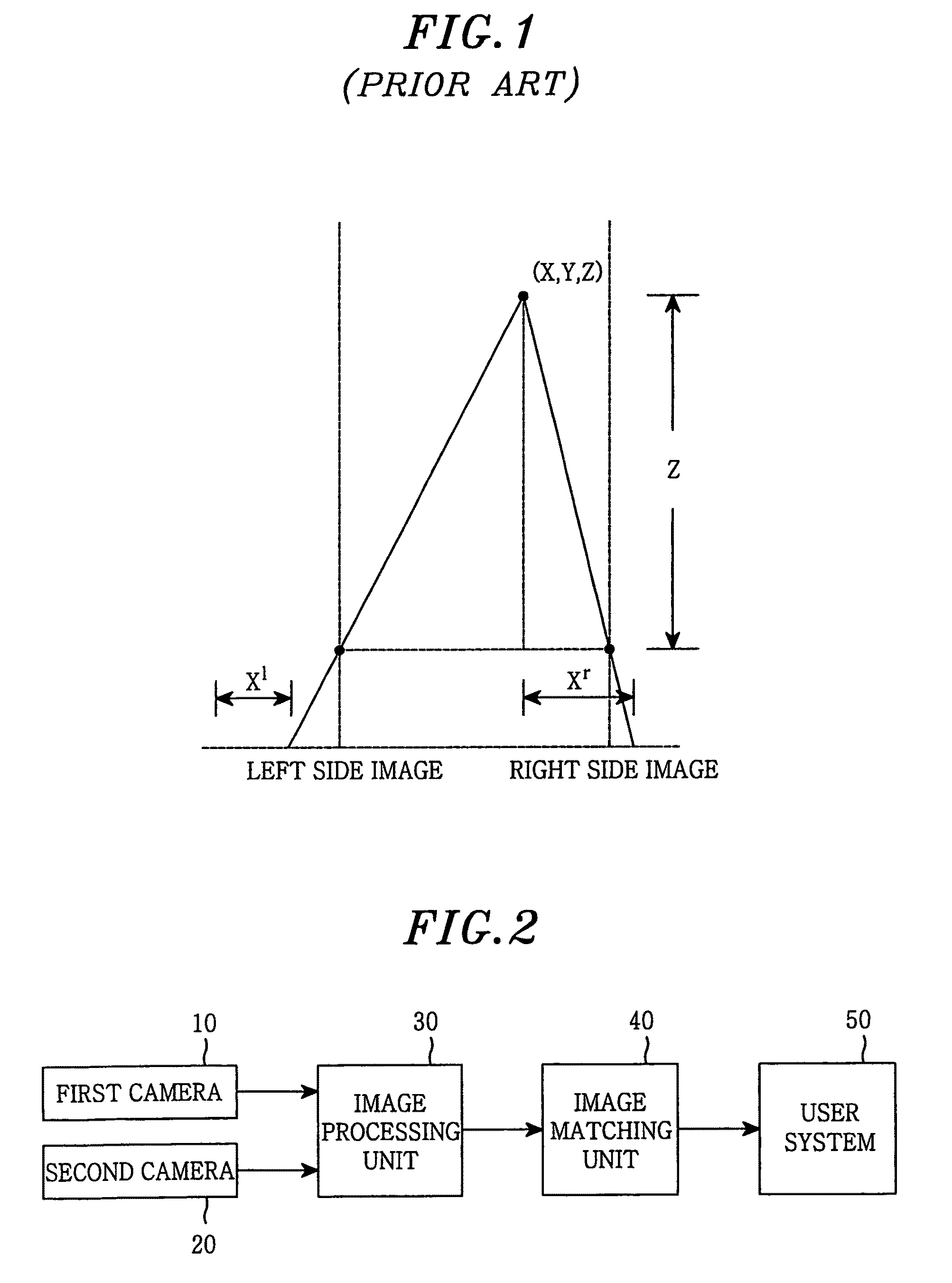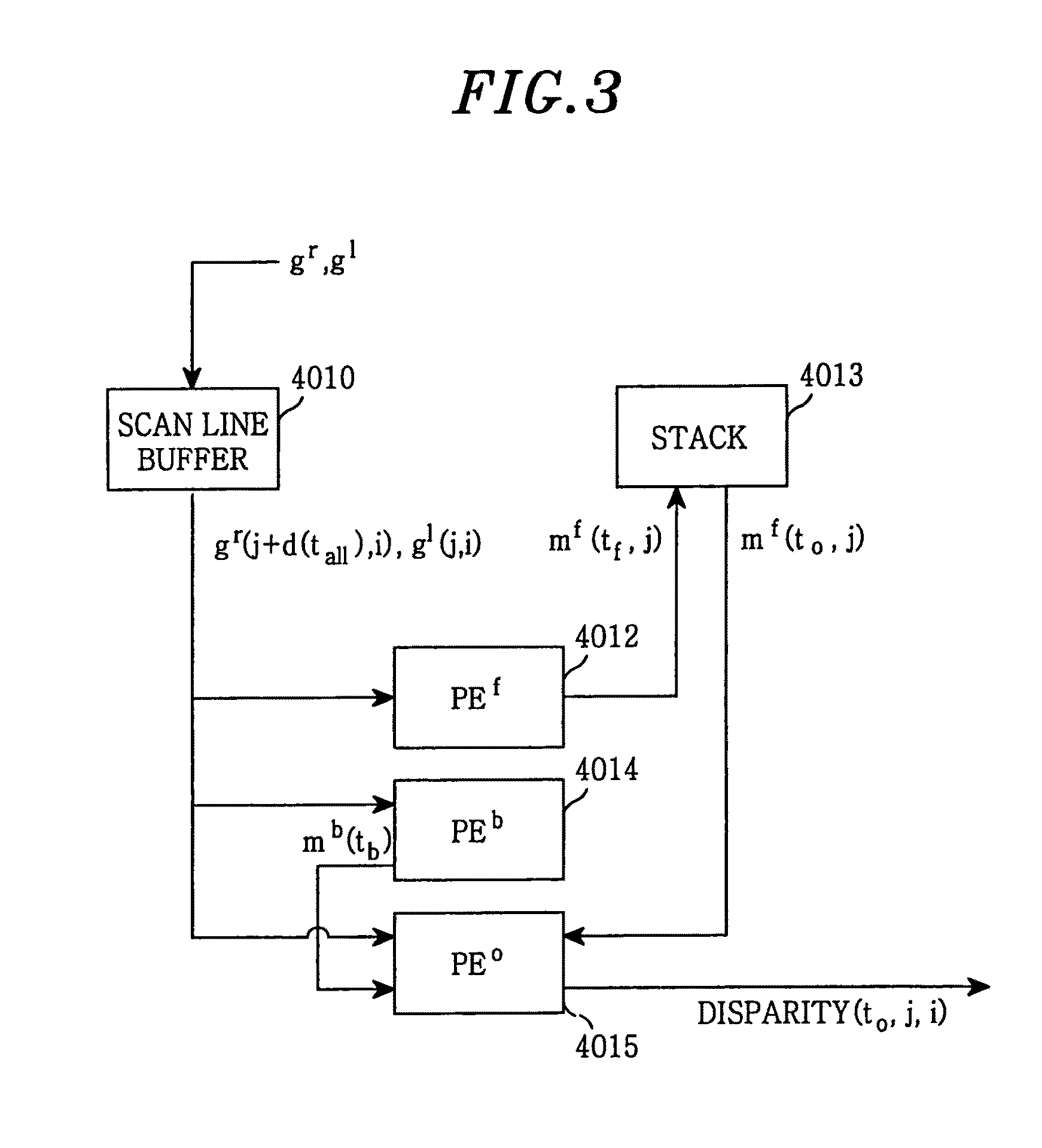Message propagation-based stereo image matching system
a stereo image and propagation-based technology, applied in image analysis, instruments, computing, etc., can solve the problems of large disparity error, large disparity matching error, and require very long processing times, so as to reduce disparity noise and production costs, facilitate implementation, and enhance the adaptiveness to the surrounding environment and processing speed
- Summary
- Abstract
- Description
- Claims
- Application Information
AI Technical Summary
Benefits of technology
Problems solved by technology
Method used
Image
Examples
first embodiment
[0038]FIG. 3 is a block diagram of an image matching unit 40 for performing an algorithm I in accordance with the present invention.
[0039]Right and left side pixel data gr(j+d(tall),i) and g1(j,i) are stored in a scan line buffer 4011. Further, a forward processor PEf 4012 receives the right and the left side image pixel data, and stores a message mf(tf,j) computed by using the image pixel data values in a stack 4013. When a backward processor PEb 4014 also receives the right and the left side image pixel data gr(j+d(tall),i) and g1(j,i), and sends a message mb(tb) computed by using the image pixel data to a disparity computation processor PEo 4015, the disparity computation processor PEo 4015 receives the forward message mf(tf,j) stored in the stack 4013 from the stack 4013, the backward message mb(tb) and the right and the left side image pixel data, and thus outputs a disparity value.
second embodiment
[0040]FIG. 4 is a block diagram of an image matching unit 40 for performing an algorithm II in accordance with the present invention.
[0041]Right and left side image pixel data gr(j+d(tall),i) and g1(j,i) are stored in a scan line buffer 4021. A forward processor PEf 4022 receives the right and the left side image pixel data from the scan line buffer 4021, a downward message md(tall,j,i−1) computed for an upper line from a buffer 4026, and stores a forward message mf(tf,j) computed by using the received image pixel data and downward message in a stack 4023. When a backward processor PEb 4024 also receives the right and the left side image pixel data gr(j+d(tall),i) and g1(j,i) and the downward message md(tall,j,i−1), and sends a backward message mb(tb) computed by using the image pixel data and the downward message to a disparity computation processor PEo 4025, the disparity computation processor PEo 4025 receives the forward message mf(tf,j) from the stack 4023, the backward message...
PUM
 Login to View More
Login to View More Abstract
Description
Claims
Application Information
 Login to View More
Login to View More - R&D
- Intellectual Property
- Life Sciences
- Materials
- Tech Scout
- Unparalleled Data Quality
- Higher Quality Content
- 60% Fewer Hallucinations
Browse by: Latest US Patents, China's latest patents, Technical Efficacy Thesaurus, Application Domain, Technology Topic, Popular Technical Reports.
© 2025 PatSnap. All rights reserved.Legal|Privacy policy|Modern Slavery Act Transparency Statement|Sitemap|About US| Contact US: help@patsnap.com



